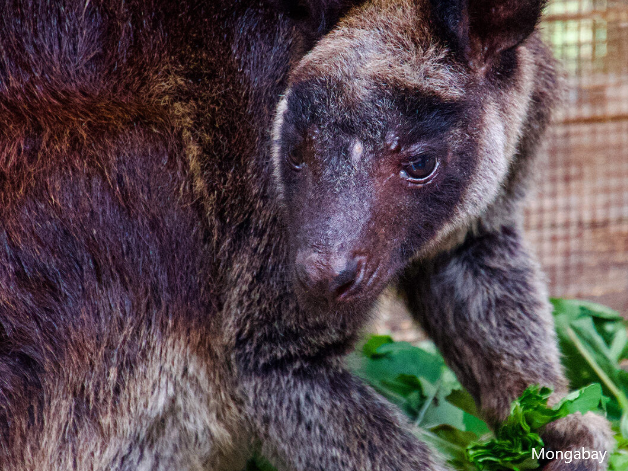
Millions of years ago, as the Indo-Australian plate pushed into the Pacific plate, a volcanic arc of islands began to emerge near the modern-day island of New Guinea that would one day form the Torricelli Mountains. And in this ancient, slow-motion reordering of Earth’s crust, life inevitably layered on top of the substrata to form one of the most species-rich spots on the planet.
“You’ve got to remember that there was the Sepik River pumping vegetation from the mainland off into the ocean, some of which was clearly reaching this island arc system,” Australian zoologist Tim Flannery of the Australian Museum in Sydney told Mongabay.
Along with that botanical foundation came a number of animals: amphibians, to be sure, which seem particularly adept at rafting on plant life from one piece of land to another, according to Flannery, along with a predecessor of the northern glider (Petaurus abidi), a marsupial species with bewitchingly bulbous eyes found only in the Torricellis.









